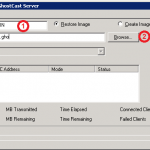If you’re in an enterprise environment, chances are that you have a KMS server running (usually either Windows 7 or Server 2008 R2). So now that Windows 8 and Server 2012 has hit VLSC for SA customers you’ll most likely want to begin testing and performing pilot deployments but we need to get our Key Management Server to accept these new clients. If you have tried to activate your KMS keys with existing KMS hosts you will receive the following error message:
Error: 0xC004F050 The Software Licensing Service reported that the product key is invalid.
Thankfully for us, Microsoft has released an update that will upgrade Windows 7 or Server 2008 R2 KMS Hosts to support Windows 8 and Windows Server 2012, you can view the KB article by clicking here (KB2691586). You will need to request the hotfix from the KB. Once downloaded, open up an elevated command prompt and execute the update (which acts as a windows update package). When it finishes installing you will need to restart your server.
Now that our server is back up, we need to replace the KMS Host key with one for 2012 or Windows 8. Open an elevated command prompt and enter slmgr.vbs /upk which will show us Uninstalled product key successfully when complete. Now we install our new key with slmgr.vbs /ipk product-key-here
You should now be presented with a product activated successfully window. You can also run
slmgr.vbs /dlv and under description you should see VOLUME_KMS_2012. Now you can start to activate your new Windows 8 and Server 2012 clients.
